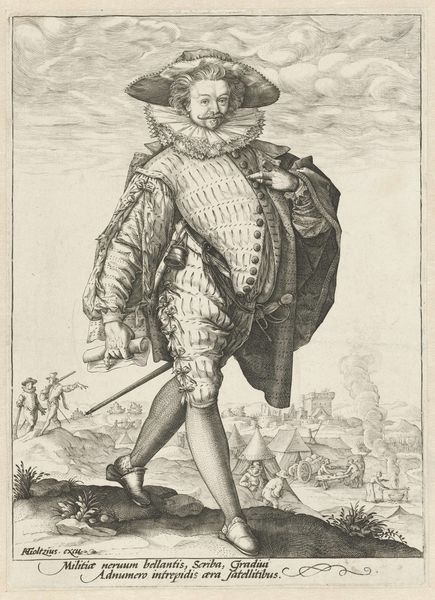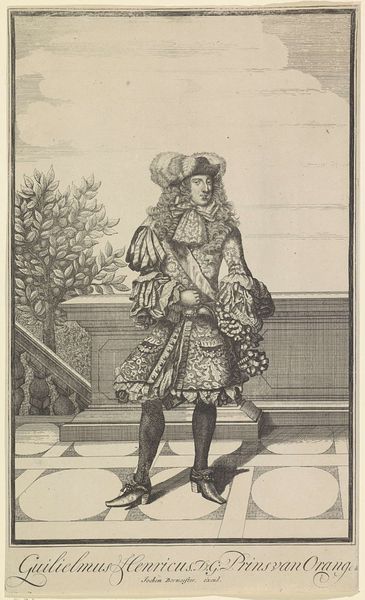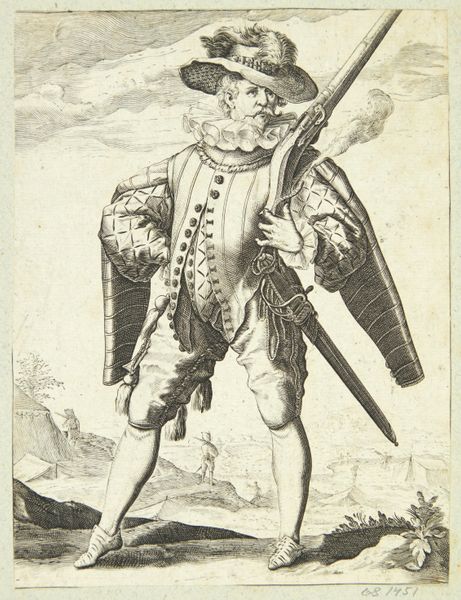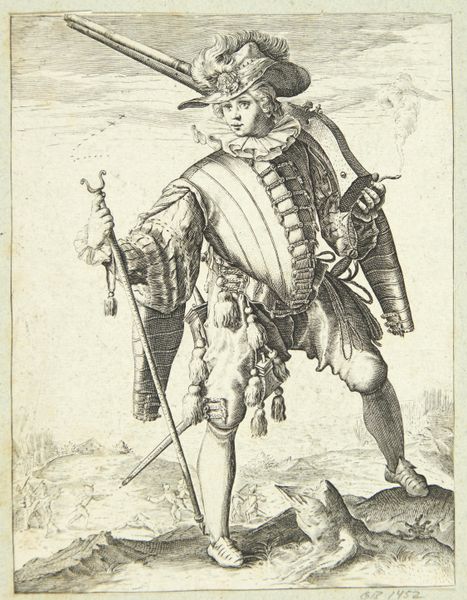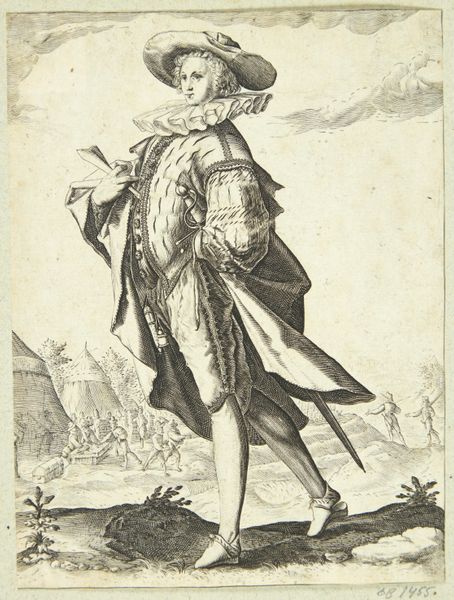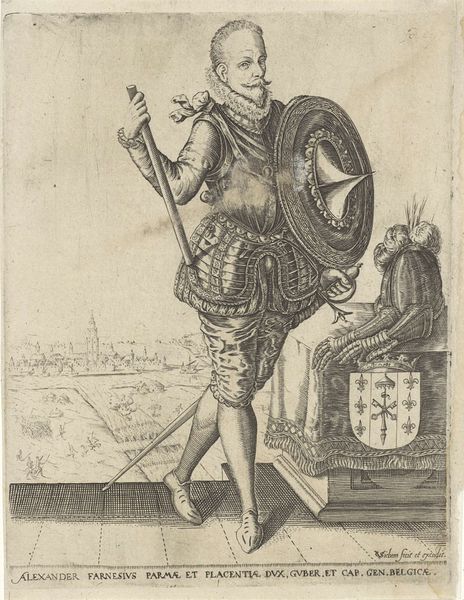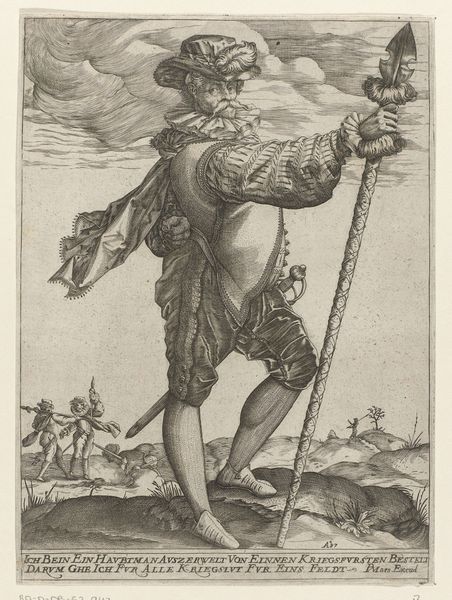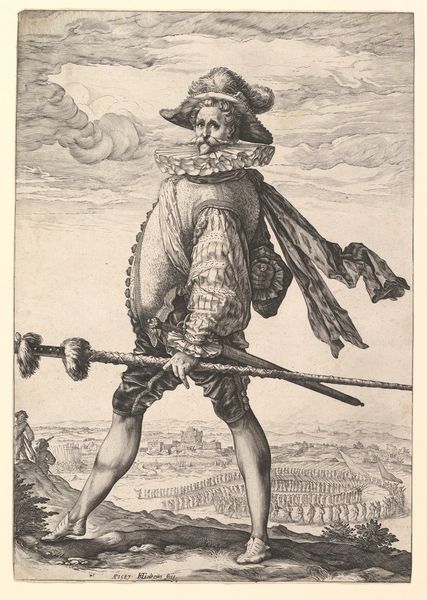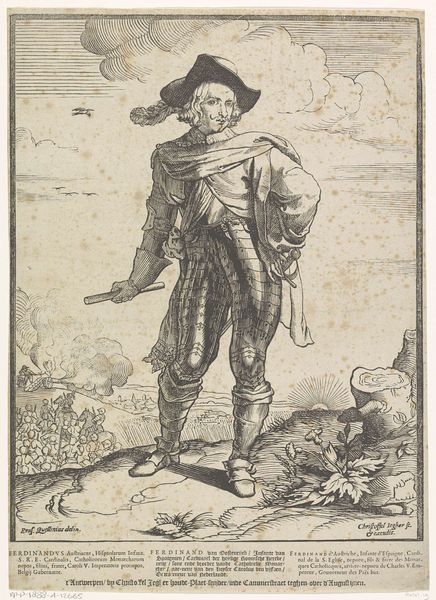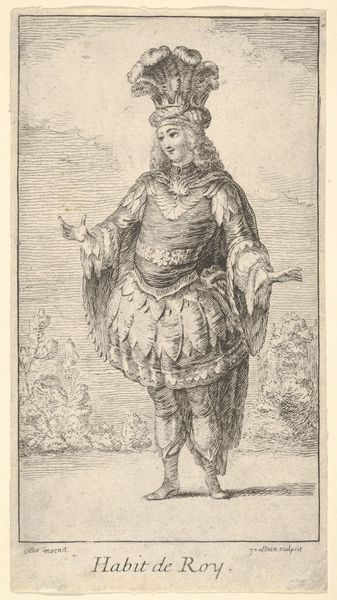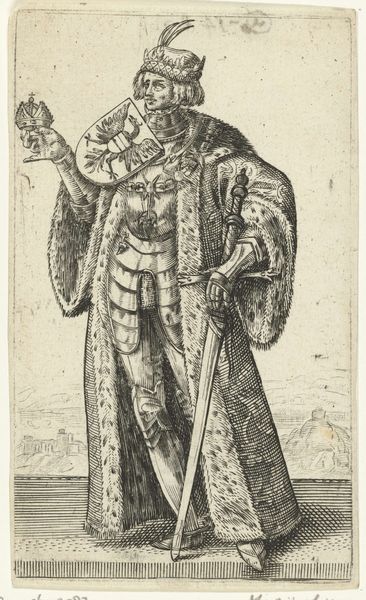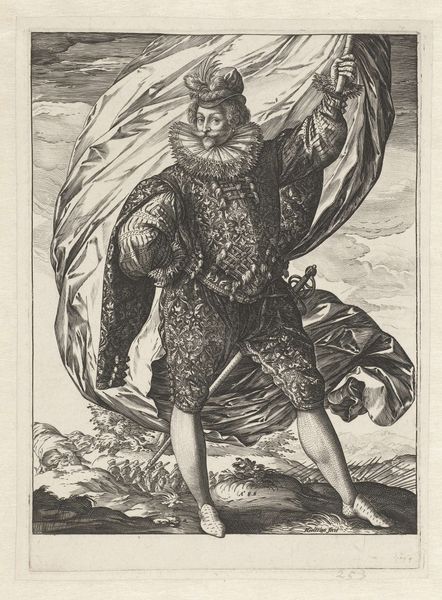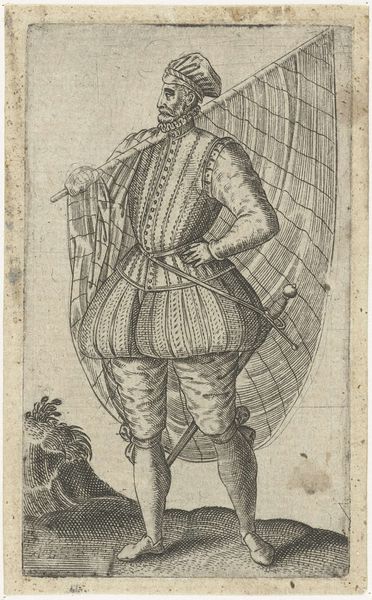
Dimensions: height 210 mm, width 155 mm
Copyright: Rijks Museum: Open Domain
Curator: Pieter Maes created this print in 1587. It’s entitled “Officier marcherend naar links” or “Officer Marching to the Left." Editor: Well, right away I notice a certain arrogance in the figure's posture—or perhaps it's a confident authority. There's a weightiness, not just in the corpulent body, but also in the crisp details. It definitely conveys status and power through composition. Curator: Indeed, there's a hierarchical language being spoken here. Look at the ornate costume. The emphasis on texture and pattern signifies the wealth, social status, and military authority of the officer. Notice how his index finger extends forward as if enacting divine authority or making an unassailable proclamation. Editor: The pointing hand evokes images of instruction, direction and a calling-to-action. The background battle with its minuscule figures—the landscape of violence, contrasts rather starkly with the man’s proud demeanor. Curator: Exactly, and his placement atop a small rise shows the spatial arrangements which reinforces symbolic hierarchy; it further segregates him from the lowly fray of the battle that is occurring. Editor: There’s definitely something about the overall symmetry too, the almost mirror-like repetition of the figures that makes it resonate in terms of power—in art, religion, and even advertising. Curator: The semiotics of clothing are interesting too. Consider the ruff around his neck, not only an indicator of fashion, but of wealth and perhaps of Dutch patriotism. Editor: It brings up questions about wealth, warfare, and power that resonate beyond just the immediate depiction. He seems indifferent to those men behind him, perhaps those that depend on his authority to secure success, which also makes the picture an interesting representation of the human condition. Curator: A close examination reveals Maes’ adept use of engraving. The sharp, deliberate lines create depth, volume, and above all the materialization of power itself. What might appear like a portrait is very deliberately engineered to be read as a history painting instead. Editor: It really speaks to how symbols, in this case specifically about this moment, and this figure’s attire and station are translated. It can become larger than this very moment in time as history marches forward. Curator: Yes. In considering both composition and symbol, we get insight into not only Pieter Maes, but Dutch society of the late 16th century. Editor: Agreed, analyzing how symbols, postures and compositions endure helps contextualize the narratives we still construct today.
Comments
No comments
Be the first to comment and join the conversation on the ultimate creative platform.
